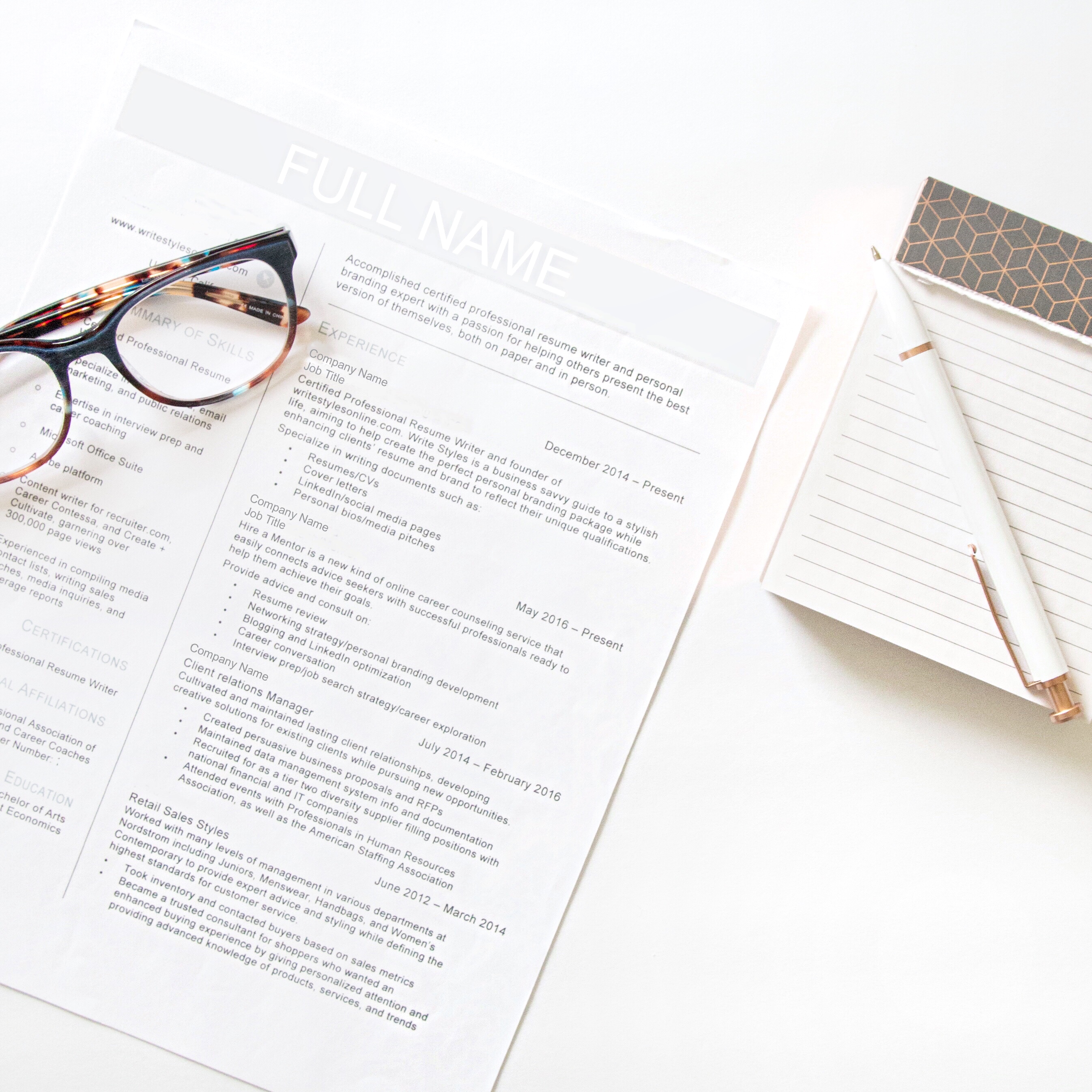
Writing a resume is hard, and it’s not something that is often taught in school, so I wanted to discuss how to write your first resume and where to start.
When you’re figuring out how to write your first resume, it is important to figure out what you want to gain from the document. What are you going to use it for? Will you be applying to higher education programs, internships, or jobs? Your resume will differ greatly depending on what you will be using it for, so it’s crucial to figure this out before getting started. Next, you’ll want to gather your information.
Start with the basics
When you’re figuring out what information to include on a resume, start with the basics. You should always create a header with your contact information including your phone, email address, and location. Just include your city and state; no need to write down your exact address. If you do have a personal website, include that as well, but do not include the link to your LinkedIn profile. If you’re using LinkedIn correctly, you will be easily searchable, so there’s no need to include the direct link on your resume.
List your skills
Putting your skills at the top of the document immediately increases the effectiveness of your resume. Recruiters look at each resume for an average of six seconds each. That means you have six seconds to show that you are qualified and what you can bring to the table. When you put your skills matrix up at the top, this shows the reader exactly what you have to offer and highlights that you are qualified for the position right off the bat.
The quicker you grab someone’s attention and persuade them that you’re the right candidate for the position, the more likely you’ll be to get past the initial influx of applicants.
Gather your employment information
When you’re learning how to write your first resume, you might not have traditional employment information. If you do have traditional work experience, gather your dates of employment, (month and year) job description, projects you worked on, and any additional information you can include like how many people you worked with.
If you’re in school, or are just starting out in your career, you’ll want to include volunteer work and/or internship information. If you need to beef up your resume even more, include information about relevant school projects you worked on. This will help highlight your ability to work on a given project under constraints, and will help highlight your relevant industry knowledge.
If you’re listing class projects on your resume, use the school name in place of the company name, and include something along the lines of “[Class Title] Project Manager,” “Student Project Manager,” or “[Class Title] Student” in place of a job title.
Gather specific metrics and achievements for each role
The key to a great resume is highlighting exactly what you’ve achieved and what you can bring to a new role. This is not the place to include a general job description that can be used for anyone with that job title. Include specific information about what you did, how many people you worked with or managed, projects you worked on, and project results to ensure that your resume immediately reflects your achievements and what you can bring to the table.
Anyone can say that they’re great at their job, but very few people can actually show it. When you’re noting your achievements, think about how you can quantify what you’ve done.
Gather your education information
Unless it is your highest level of education or you are in your first year of college, do not include information about your high school diploma. Similarly, there is no need to include GPA unless you’re currently in school and have a very high GPA (3.8 or above).
When it comes to listing education, start with the highest level of education at the top and list backwards from there. For example:
PhD information
Master’s information
Bachelor’s information
High School information
Unless you are currently in school or are in a profession where your degree is a key factor, (i.e. medicine, law, etc.) your education will be listed at the bottom of your resume. If you are in school or in one of the professions where your education is very important, your education will go towards the top under your skills list.
Include certifications and specialized training
When you’re learning how to write your first resume, certifications and specialized training make a huge difference. Even if you don’t have specific certifications but you’ve had internal training, taken an online course, or even just an online tutorial, include that in your resume. For example, you can take some online tutorials and training sessions on QuickBooks or Adobe Photoshop via YouTube and list that as specialized training. As long as the training gives you an advantage and further educates you on a subject, you can list it on your resume.
_____________
If you’re struggling with how to write your first resume, relax. You’re not alone! Writing a resume is hard, and it’s often something that people are forced to learn on their own. Just take it one step at a time, gather the required information, and go from there!
And when in doubt, you can always hire a professional to help!
